Cultural Tours in Kenya takes you for an amazing encounter with Kenya’s indigenous tribes. Visiting Kenya’s tribes exposes you to their traditional beliefs, dances, pastoral life, festivals, marriage ceremonies, polygamous practices, food and lifestyles. While visiting theses tribes, you will notice just how hospital Kenyans are to foreigners. The Kenyan culture is so interesting that many visitors have chosen to stay permanently after interacting with the locals.
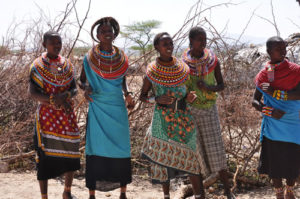 Kenya’s culture is heavily influenced by expat workers, migrants and inter-marriages that occurred when the first foreign settlers arrived at the East African coast. As a result, it is possible to visit some of the most primitive tribes in Africa and also those that have embraced modern ways of living in the major cities/islands. Each major town and city has its own cultural identity depending on the dominant tribe in the area. English is the national language but Swahili is the dominant language. Each tribal group still speak their own language but Swahili helps unite every everybody.
Kenya’s culture is heavily influenced by expat workers, migrants and inter-marriages that occurred when the first foreign settlers arrived at the East African coast. As a result, it is possible to visit some of the most primitive tribes in Africa and also those that have embraced modern ways of living in the major cities/islands. Each major town and city has its own cultural identity depending on the dominant tribe in the area. English is the national language but Swahili is the dominant language. Each tribal group still speak their own language but Swahili helps unite every everybody.
Why go for a cultural experience in Kenya? Experiencing the culture of people in a new country not only helps you understand your own but also erases any biases you may have about others. You get to know why people behave in a certain way, what makes them different and what you can learn – An example is the value of the extended family and raising of children as a community. Apart from visiting the indigenous tribes living close to the national parks, there is also an opportunity to visit schools and central market to learn how people make a living.
Four more information, you might want to read about the things to do in Kenya. We also have interesting articles on the things to do in Nairobi and what to do in Maasai Mara. You may also find our article about the cultural attractions in Tanzania interesting.
Cultural Attractions in Kenya
Visiting the Maasai People at the Loita Plains in Narok: The Maasai are one of the few indigenous tribes in Africa that have left their culture intact. The Maasai are a proud and confident people who have gained a reputation as fearless warriors. They stand out because of their colorful garments, jewelry and spear-wielding habit. The Maasai depend entirely on their livestock and because 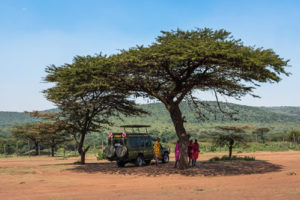 of that live a nomadic life in search of pasture/water. The Maasai tend to live in communities or small settlements that can contain between 8 to 15 houses. The settlements are protected from predators using thorn fences and bushes.
of that live a nomadic life in search of pasture/water. The Maasai tend to live in communities or small settlements that can contain between 8 to 15 houses. The settlements are protected from predators using thorn fences and bushes.
Most tourists who visit the Maasai Mara tend to make a stop at Loita plains in Narok. During this stop, tourists are led by a Guide to visit the Maasai homesteads. While with the Maasai, tourists can help tend to the goats, sheep and cattle. There is also an opportunity to meet the elders where visitors get to learn more about the history of the Maasai and their culture. If you spend the evening with the Maasai, you can also get a chance to listen to folk songs, stories or dance around the campfire.
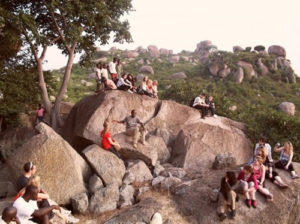 Spend time with the Luo Speaking people: The Luo are one of the 3 dominant tribes in Kenya. The group moved from South Sudan and traveled to Kenya through Uganda. Most now live in Kisumu or the wider Nyanza province which is close to Lake Victoria. While visiting the Luo people, you will not only experience their rich culture but also visit Lake Victoria and the Kit-Mikayi. Kit-Mikayi is a rock formation with a lot of historical importance to the Luo people. Many villages still go to this rock for sacrifices and prayer.
Spend time with the Luo Speaking people: The Luo are one of the 3 dominant tribes in Kenya. The group moved from South Sudan and traveled to Kenya through Uganda. Most now live in Kisumu or the wider Nyanza province which is close to Lake Victoria. While visiting the Luo people, you will not only experience their rich culture but also visit Lake Victoria and the Kit-Mikayi. Kit-Mikayi is a rock formation with a lot of historical importance to the Luo people. Many villages still go to this rock for sacrifices and prayer.
Experience the Islamic Culture in Lamu: Lamu is the oldest town along the coast of Kenya. It is an archipelago consisting of other islands like Kiwayu. Lamu is a traditionally Swahili and Muslim town 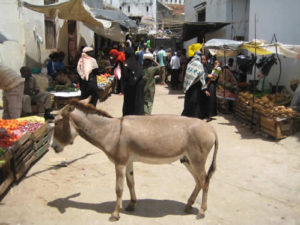 hence one of the best places to experience the Swahili culture. It is also a great place to learn about the kind of life lived by the first Arab traders who arrive as early as the 11th Century. They still use Dhows for navigating through the Indian ocean and donkeys while on the island.
hence one of the best places to experience the Swahili culture. It is also a great place to learn about the kind of life lived by the first Arab traders who arrive as early as the 11th Century. They still use Dhows for navigating through the Indian ocean and donkeys while on the island.
On a typical visit, tourists take time to explore the narrow streets in town before going to enjoy the pristine beaches of the different islands. Other activities in Lamu include swimming with dolphins and other water sports. By the end of your visit to the archipelago, you would have discovered beautiful scenery, ancient buildings and leant a lot about the history of the Swahili language/culture.
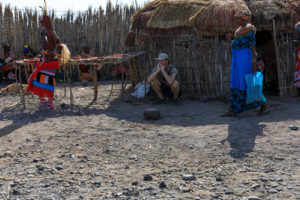 An Encounter with the Turkana and El Molo: The Turkana live in the northern part of Kenya and are also pastoralists like the Maasai. The area where they live is arid forcing them to move from place to place looking for fresh pasture and water for their animals. As climate change and land degradation becomes more prominent, the Turkana are gradually embracing other ways of making a living. It is now possible to find them employed in cities or as fishermen in Lake Turkana. Visiting the Turkana will offer an amazing cultural experience that is comparable to the Maasai. A visit is incomplete without visiting Lake Turkana to also visit the endangered El Molo tribe.
An Encounter with the Turkana and El Molo: The Turkana live in the northern part of Kenya and are also pastoralists like the Maasai. The area where they live is arid forcing them to move from place to place looking for fresh pasture and water for their animals. As climate change and land degradation becomes more prominent, the Turkana are gradually embracing other ways of making a living. It is now possible to find them employed in cities or as fishermen in Lake Turkana. Visiting the Turkana will offer an amazing cultural experience that is comparable to the Maasai. A visit is incomplete without visiting Lake Turkana to also visit the endangered El Molo tribe.
Visit the Kamba People in Machakos: The Kamba are one of the prominent and more assertive tribes of Kenya. Most of them live in Machakos town. This town is now a major tourist attraction and lot of development work was undertaken in recent years. A full national park was established in Machakos recently where tourists who are interested can spot some of Kenya’s famous wildlife.
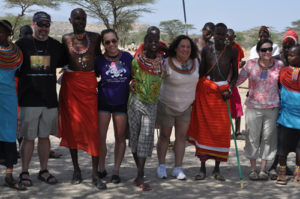 The Samburu: The Samburu are one of the closest relatives of the Maasai. Like the Maasai, the Samburu have not allowed western influences to erode their original culture. Like the Maasai, they speak Maa and arrived in Kenya from what is now South Sudan. Their dancing style is similar to the Maasai and also involves dancing high in circles. The Samburu are also nomadic pastoralists and depend on their animals for survival. The Samburu feed on cow milk, meat and blood. They will only sell their animals on special occasions or to get money.
The Samburu: The Samburu are one of the closest relatives of the Maasai. Like the Maasai, the Samburu have not allowed western influences to erode their original culture. Like the Maasai, they speak Maa and arrived in Kenya from what is now South Sudan. Their dancing style is similar to the Maasai and also involves dancing high in circles. The Samburu are also nomadic pastoralists and depend on their animals for survival. The Samburu feed on cow milk, meat and blood. They will only sell their animals on special occasions or to get money.
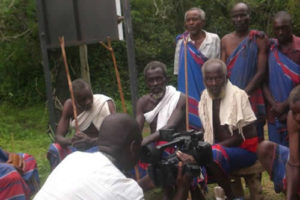 The Mijikenda Kaya forests: To experience the unique cultures of some parts of Kenya, you must visit these sacred forests. There are 11 forests in the area – each surrounded by villages which were built in the sixteenth century. Most of the village folks abandoned the villages in the 1940’s leaving behind the elders to keep the cultural values alive. The elders have ensured that their ancient practices and believes remain intact. Visit the Mijikenda Kaya forests for a truly unique cultural experience that is different from everything else we have discussed so far.
The Mijikenda Kaya forests: To experience the unique cultures of some parts of Kenya, you must visit these sacred forests. There are 11 forests in the area – each surrounded by villages which were built in the sixteenth century. Most of the village folks abandoned the villages in the 1940’s leaving behind the elders to keep the cultural values alive. The elders have ensured that their ancient practices and believes remain intact. Visit the Mijikenda Kaya forests for a truly unique cultural experience that is different from everything else we have discussed so far.
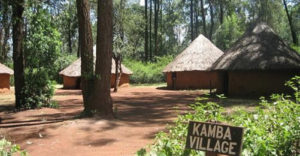 Visit the Bomas of Kenya: If you don’t have enough time to visit the individual tribes in the countryside, you can simply visit the Bomas of Kenya for a chance to see all the different tribal groups in one place. The center was opened in 1971 and is found in Nairobi, along Lang’ata Road. The Bomas of Kenya is special because it offers variety hence allowing tourists to see, experience and learn everything there is to know about Kenya’s different cultural groups. The experience can be overwhelming and we recommend that you set aside a full day to enjoy everything on offer.
Visit the Bomas of Kenya: If you don’t have enough time to visit the individual tribes in the countryside, you can simply visit the Bomas of Kenya for a chance to see all the different tribal groups in one place. The center was opened in 1971 and is found in Nairobi, along Lang’ata Road. The Bomas of Kenya is special because it offers variety hence allowing tourists to see, experience and learn everything there is to know about Kenya’s different cultural groups. The experience can be overwhelming and we recommend that you set aside a full day to enjoy everything on offer.
Mombasa: Apart from enjoying the beautiful beaches of the Indian ocean, Mombasa is one of the best places to experience the Swahili culture in all its variations. In fact, there is a saying that you have not 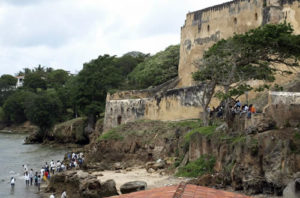 known the Swahili language until you have met someone from Mombasa. For citizens of Kenya, listening to the Swahili spoken in Mombasa may make you question your own knowledge of the language.
known the Swahili language until you have met someone from Mombasa. For citizens of Kenya, listening to the Swahili spoken in Mombasa may make you question your own knowledge of the language.
The culture of residents of Mombasa was deeply influenced by the Arab and Persian traders who first visited the coast of East Africa over 400 years ago. They intermarried with the locals resulting in the birth of the Swahili culture. The Arabs, Persians and Europeans left behind stunning architectural wonders which are separate attractions of their own. Fort Jesus for example was built in 1593 by the Portuguese to secure the coastal area and control the lucrative trade with the mainland. You can read more about the tourist attractions in Mombasa.
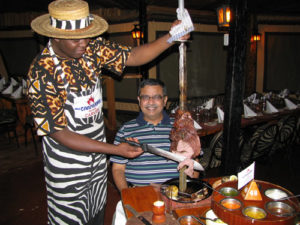 The Carnivore Restaurant: If you are in Nairobi and do not have enough time to visit the villages upcountry, you can simply attend the Theme nights at the Carnivore restaurant. There is also a theme night for each of the major tribes (Kikuyu, Luo, Kamba, Luhya and Kalenjin) in Kenya. Only one tribe is featured in a night to show off their traditional music, dance, foods and local brews. All in all, visiting the theme nights at the Carnivore restaurant offer unique opportunities to learn about the culture of the different tribes without having to travel upcountry.
The Carnivore Restaurant: If you are in Nairobi and do not have enough time to visit the villages upcountry, you can simply attend the Theme nights at the Carnivore restaurant. There is also a theme night for each of the major tribes (Kikuyu, Luo, Kamba, Luhya and Kalenjin) in Kenya. Only one tribe is featured in a night to show off their traditional music, dance, foods and local brews. All in all, visiting the theme nights at the Carnivore restaurant offer unique opportunities to learn about the culture of the different tribes without having to travel upcountry.
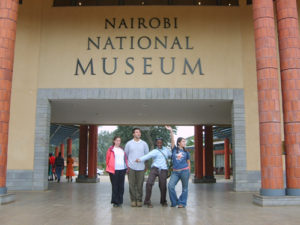 National Museums and Archives: Visiting the National Museums and Archives is also recommended for those who are in the country for a short time. The National Archives in Nairobi contains records of all the different cultural groups in Kenya. Visiting the National Museums in Kenya is equally rewarding allowing you to see cultural artifacts and other information left behind by the British colonial government. There is always a resident dance troupe to entertain visitors and showcase all that is good about the people of Kenya.
National Museums and Archives: Visiting the National Museums and Archives is also recommended for those who are in the country for a short time. The National Archives in Nairobi contains records of all the different cultural groups in Kenya. Visiting the National Museums in Kenya is equally rewarding allowing you to see cultural artifacts and other information left behind by the British colonial government. There is always a resident dance troupe to entertain visitors and showcase all that is good about the people of Kenya.

